Ayzit Bostan Design
As I enter Ayzit Bostan’s studio in Munich’s slaughterhouse district to interview her about her work, I am greeted by a hand-drawn smiley, a black outline on pink paper. Something about it strikes me as different from normal smileys until I realize that the corners of the mouth are simply higher, resulting in an even cheerier smile. A twist that is characteristic of Bostan — small, yet so effective.

Designer and artist Ayzit Bostan, Ankara-born and at home in Munich, explains that the smiley poster is intended as a souvenir for guests at the City of Munich Design Award ceremony. She was selected as the 2023 winner of the city’s highest honour in the field of design. And rightly so.
Slim, with severely sleeked black hair, she has a smile that echoes her smiley; amiable, contemplative, thoughtful and slightly detached, as we sit in her studio. Although her works reveal at a glance that every detail is crafted to perfection, talking about her output does not come naturally to her. She knows precisely what she seeks to achieve and how she achieves it in her creativity, shunning standard design principles in favour of creating her own rules.
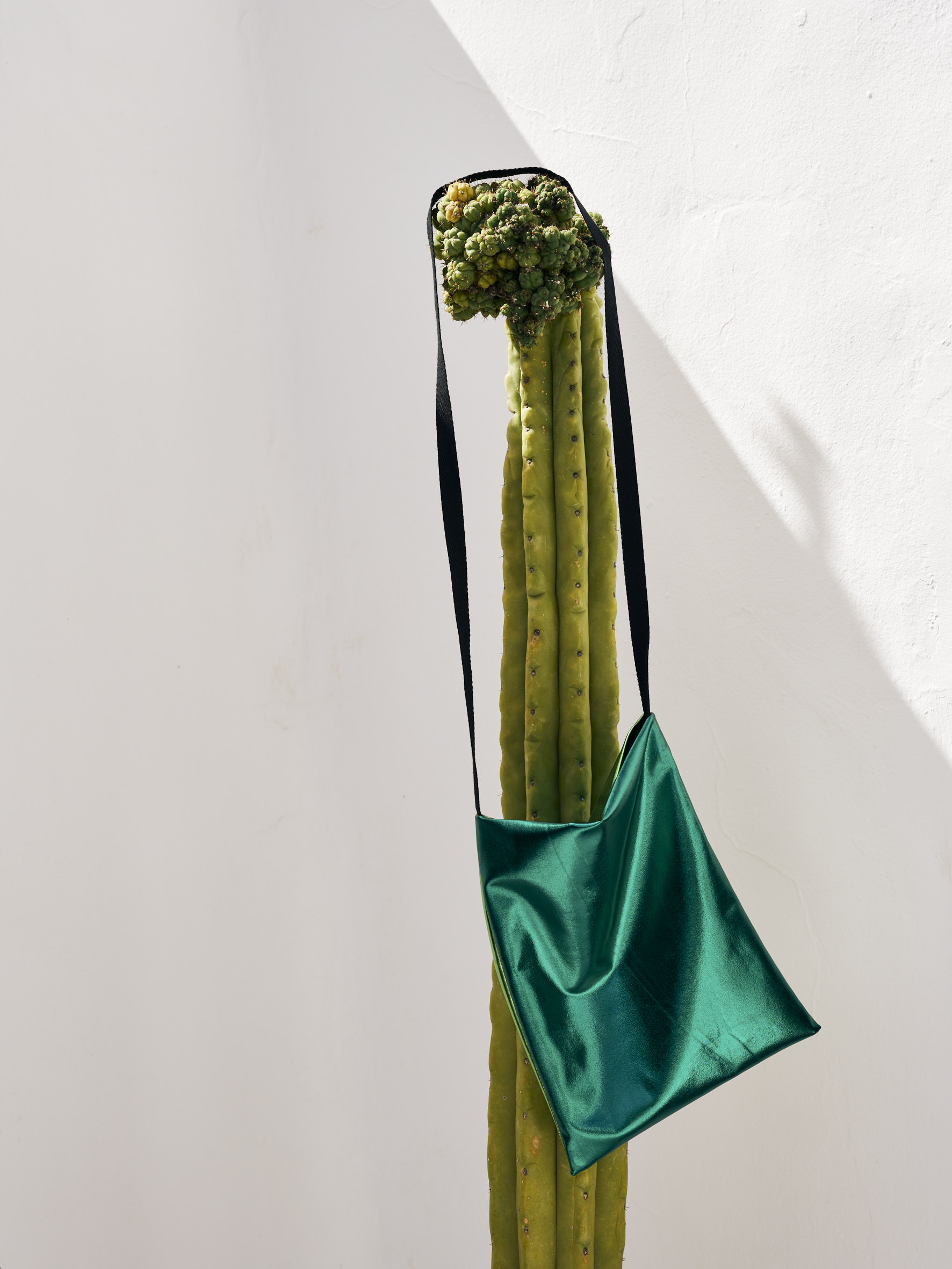
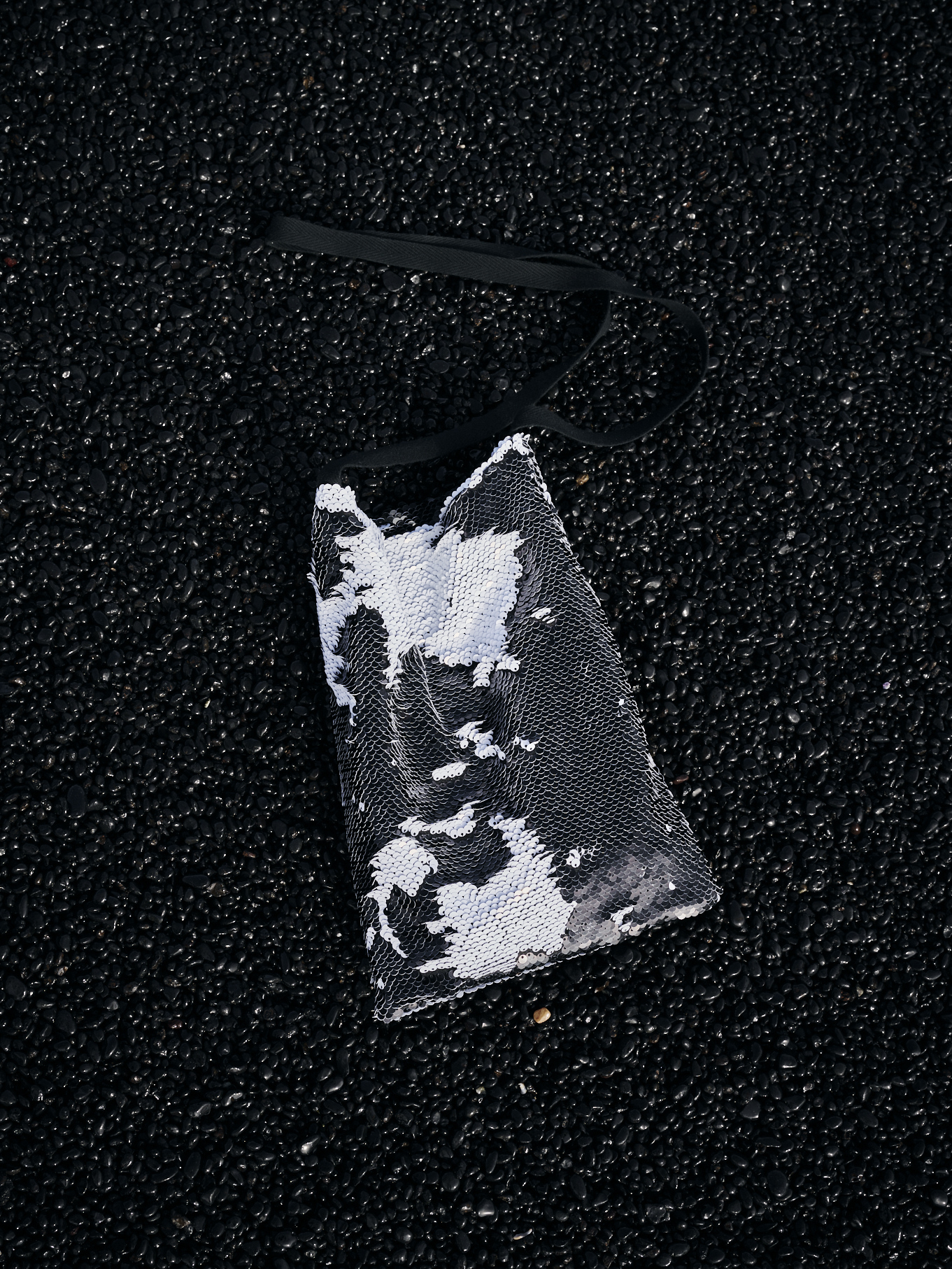
Photos taken in Lanzarote back in March 2023
So what’s so special about her design methods? It’s fair to say that fabric is her material of choice. Soft, sheer, draping and flowing, sparkly and frilly or minimalist and simple, the artist shapes her fabrics in ways that are constantly surprisingly different, yet always stay true to themselves. Depending on the context, they are used by her to clothe bodies, create spaces and tell stories.
The latest example is Ayzit Bostan Palace, exhibited in Munich’s Rathausgalerie. Referencing her Turkish roots playfully, but not without irony, she used fabrics, lighting and sound to transform the historic room in Munich Town Hall, once used for citizens to pay in their taxes and now a city-run gallery, into a far-distant place of reverie and longing. Soundtracked by a collage of birdsong, muezzin calls and Turkish music, it evoked the atmosphere of an enchanting garden of paradise, or the courtyard of a Middle Eastern palace or riad.
Author Johanna Adorjan described Ayzit Bostan Palace on Instagram as a creation made of air, lightness and a breath of melancholy. And yet the Oriental palace — named after a woman and a designer, of all people! — remains a place of contemplation and of art.
It really isn’t an easy space to design for; there are so many different stylistic elements. In the end, I used a few scraps of fabric and some sound to transform it into a different part of the world. It was exciting to watch how the gallery became the polar opposite of the hustle and bustle of Marienplatz [the city’s main square] outside, and how visitors came from all over to spend time there, Ayzit reminisces as she recalls the exhibition.
Although she was only four when she came to Germany, she retained many memories of her childhood in Turkey. Her goal was to work with a sound installation that would release the elements she remembered from her early home and that captured the beauty of Oriental places: a certain fragrance, certain sounds, a certain aesthetic. Thinking back over her words, she points out how surprised she was at being able to achieve such an intense and sensuous transformation of the space using nothing more than gauzy, almost invisible fabrics and sound.
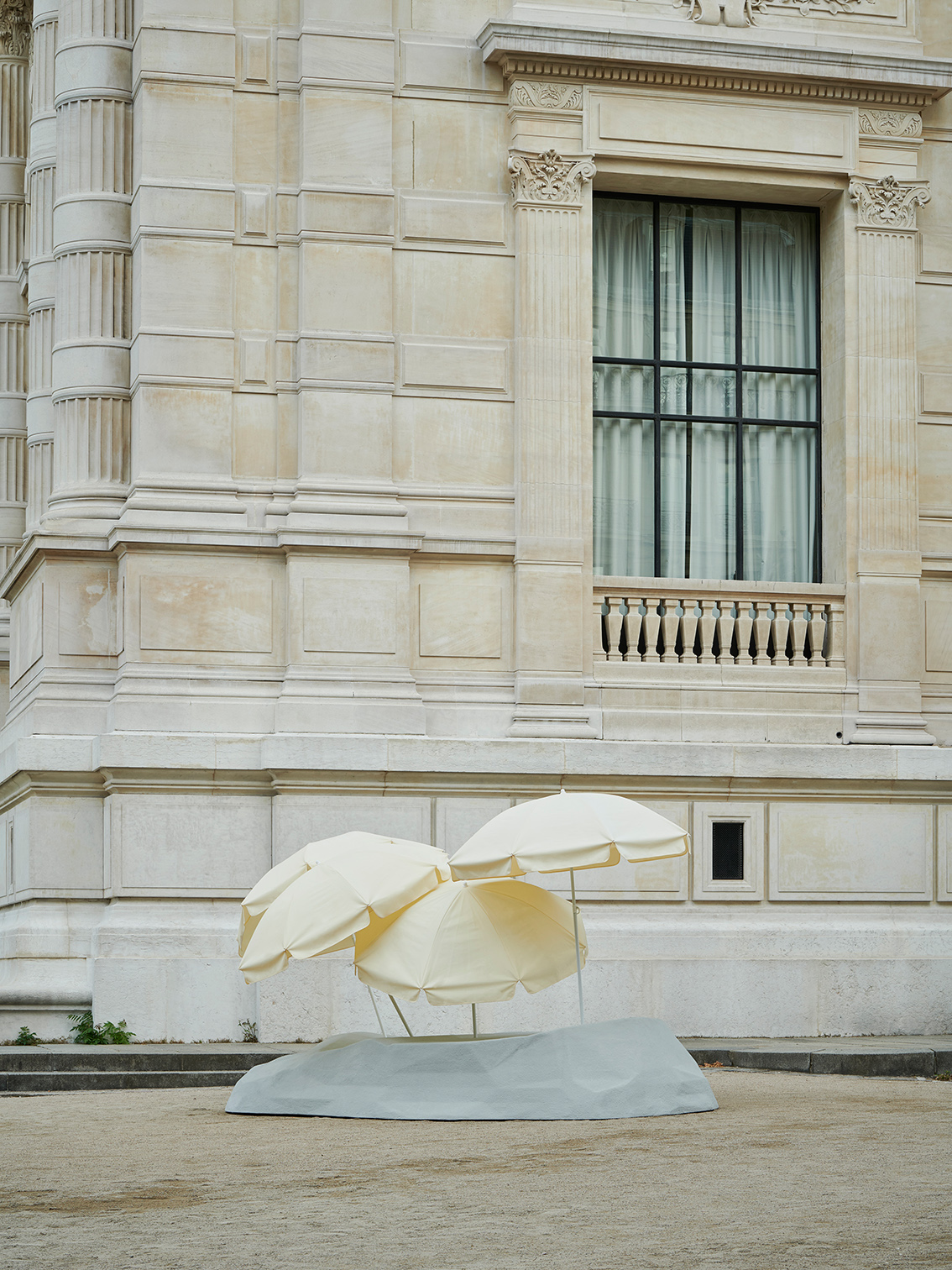
PARASOL — installation at Pinakothek der Moderne was part of ‚Ins Freie‘ exhibition at Die Neue Sammlung München in 2022
Replika, Ayzit Bostan’s textile installation in Munich Court Garden which she created in collaboration with industrial designer and photographer Gerhardt Kellermann, describes such a place of longing. In 2012, Replika gave Munich people the opportunity to draw closer to their historical passion for Mediterranean Italy. The artist installed textile hangings curtaining the Italianate arcades of the Court Garden and thus transformed them into a simple replication of the famous Piazza San Marco, that most glamorous spot in Venice.
Ayzit Bostan drew her inspiration from a conceptual series of black and white photographs documenting the curtained arches on the piazza by Ursula Schulz-Dornburg. Her aim was to capture precisely that interplay of light and shade, motion and stillness, interior and exterior, revelation and concealment, decoration and architecture, and transfer it to the Munich location she had chosen as an expression of the city’s identity.
What I liked best was the unpredictability of the interactions with the curtains. Children used them for hide-and-seek, the wind caught them; sometimes they were pulled up, while at other times they closed off the archways and passages. The space shifted and changed constantly.
What was the main challenge she had to deal with, I ask. The answer shoots back, Getting to grips with the dimensions of this urban space using nothing but a kilometre of canvas. Ayzit explains that her choice of textile material as a large-scale design element stems from her work in fashion, her clothing designs, which honed her assurance in handling fabrics to the point where she simply began to think bigger and seek to shake off restrictions.

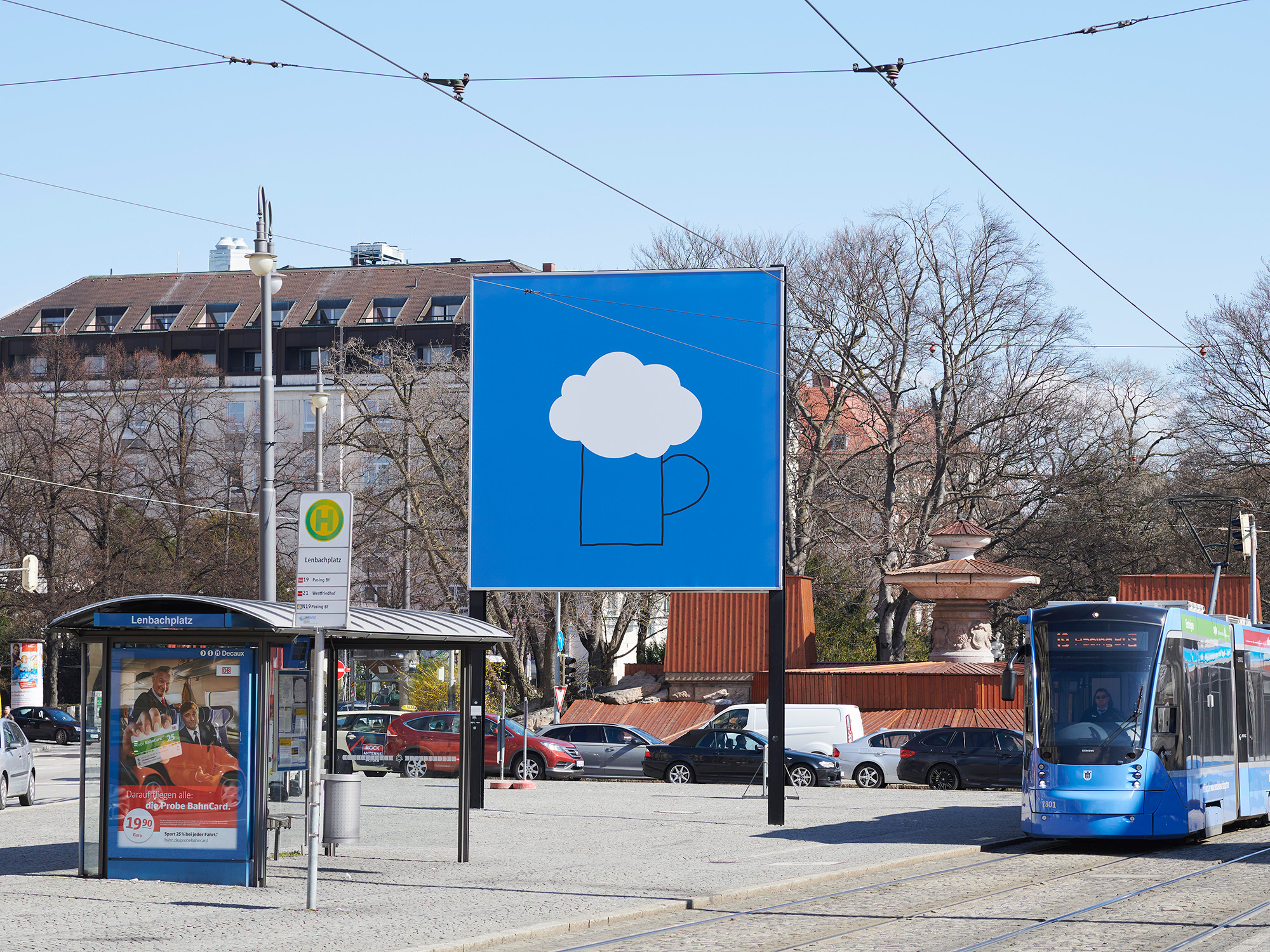
BLAU — installation at Lenbachplatz Munich invited by Kulturreferat München back in 2019
Ayzit’s fame has principally grown from her fashion designs, such as her sweater collection, which she uses to communicate messages, often by manipulating and paring back well-known symbols or signs. Her pieces are embellished with a simple laser-cut heart or a Milton Glaser-style I ❤; with an invitation to imagine peace in golden Arabic-inspired lettering, with a simple silver outline of the Rolling Stones’ world-famous lips logo or — during the COVID-19 pandemic — with a simple Pieks [‘Jab’].
Stripped back to their absolute minimum, these graphic elements develop a powerful impact and become assured, confident statements in their own right, the antithesis of decorative fashion elements or trendy quotes. Ayzit identifies the I ❤ as her first major conversation piece. She enjoys this unspecified, untargeted proclamation of love. Simply I love as a vast, boundless, personal and powerful statement. In her view, love is the opposite of hate. Ayzit moves freely and naturally between pop icons and Munich’s subculture and design scene, with which she has close bonds and which she has played a leading role in shaping.
In response to the question of where she sees herself in five years and what vision she has, Ayzit affirms that her secret is not to have a vision at all. She explains that five years ago she could never have imagined that this year she would be staging two major exhibitions — a solo exhibition in the Rathausgalerie and a group exhibition in the Neue Sammlung — on top of receiving the City of Munich’s design award.
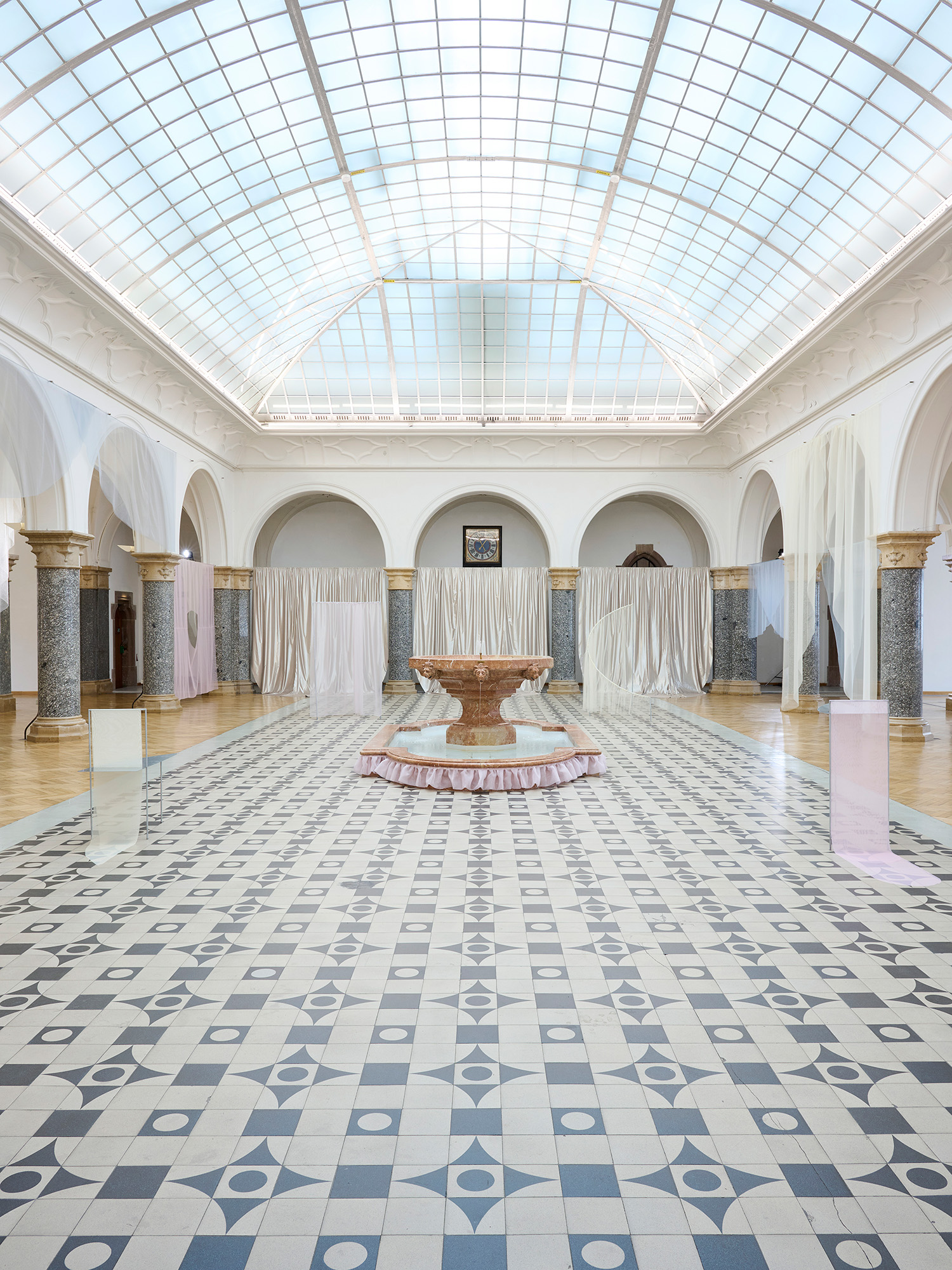
AYZIT BOSTAN PALACE — on-site intervention in Munich’s Rathausgalerie back in 2023
Whether Ayzit Bostan is a designer or an artist remains open to debate. Artists often regard her as being too much of a designer, designers as too much of an artist. In fact, Ayzit is a creative thinker who constantly and persistently uses deconstruction, transfers and references in her work while leaving the idea of design conventions and traditional disciplines far behind her. She eludes all attempts to place her in a classic category. And that is precisely what makes her work and her personal signature so distinctive and unique.
Short biography Ayzit Bostan
Ayzit Bostan completed a dressmaking and tailoring apprenticeship at Munich fashion school Meisterschule für Mode and trained as a pattern maker there before launching her own independent label in 1995. She won the City of Munich Förderpreis für Design (design sponsorship award) in 1997. She has taught at Kunsthochschule Kassel as Professor for Textile Product Design since 2012.
Ayzit Bostan has won numerous awards and accolades for her work, including for her bag designs for Bree, and been part of a host of national and international exhibitions, most recently in 2021 at the Goethe Institutes in Paris und Bordeaux. Her works are exhibited in the Neue Sammlung, the design museum of the Pinakothek der Moderne. In 2023 she received the City of Munich Design Award, the city’s highest honour in the applied arts, established 30 years ago. Ayzit Bostan is the second woman to receive it after Erico Nagai in 2005.
